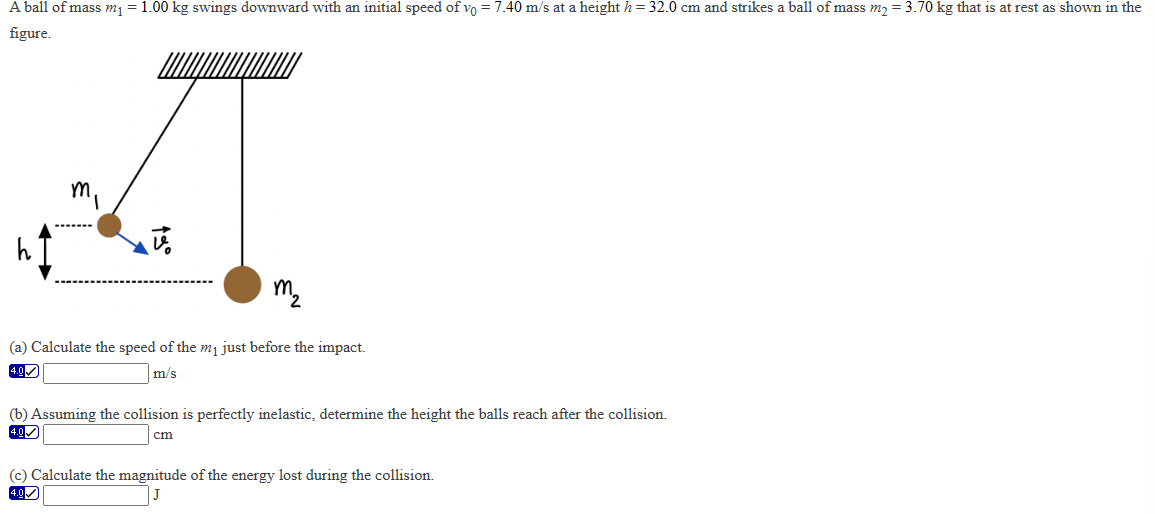A ball of mass m1 = 1.00 kg swings downward with an initial speed of v0 = 7.40 m/s at a height h = 32.0 cm and strikes a ball of mass m2 = 3.70 kg that is at rest as shown in the figure. (a) Calculate the speed of the m1 just before the impact. 4.0m/s (b) Assuming the collision is perfectly inelastic, determine the height the balls reach after the collision. 4.0cm (c) Calculate the magnitude of the energy lost during the collision. 4.00 J
